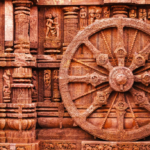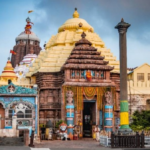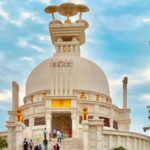In the Indian state of Odisha, the capital city of Bhubaneswar is home to the 11th-century Hindu Rajarani Temple.It stands 18 meters (59 feet) tall.There has been great discussion over the temple’s name. The most plausible explanation is that the name refers to the gorgeous rajarani red and gold sandstone that was utilized in its construction. The argument is made more difficult by the fact that every Hindu temple in Bhubaneswar that honors the god Shiva has a name that ends in eswar, such as Parasurameswara, Mukteswara, etc.On the other hand, the presiding deities of non-Shaivite temples—like the Parvati temple—are the source of theirs.A prominent academic has contended that the temple was originally known as the Shiva shrine Indreswara, and that the name Rajarani was only given to it later on (because to the sandstone).This appears to be the most plausible outcome.
The extremely basic Jagmohana (porch) was clearly restored in 1903 after collapsing into ruins. The deul (tower), on the other hand, is renowned for its exquisite design that features little temple spires arranged in a circle around the main tower. The temple’s sculptures are graceful and vibrant, particularly the lovely female figures that are depicted engaging in romantic flirtation as well as cradling babies, gazing in mirrors, and other pastimes, and having fun with house birds. The renowned “Guardians of the Eight Directions,” who watch over and radiate the strength of the temple to the eight cardinal points, are located on the lower register of the deul on the corner projections. They are Indra (east), the chief of the 33 Vedic nature deities; Agni (south-east, Vedic God of fire); Yama (south, God of death); Nirriti (south-west, deity associated with suffering); Varuna (west, Vedic deity of the ocean); Vayu (north-west, wind God); Kubera (north, lord of wealth, depicted here with a wish-fulfilling tree); and Ishana (north-east, a form of Shiva). Starting from the left of the entrance to the deul, they are listed in a clockwise manner.
















